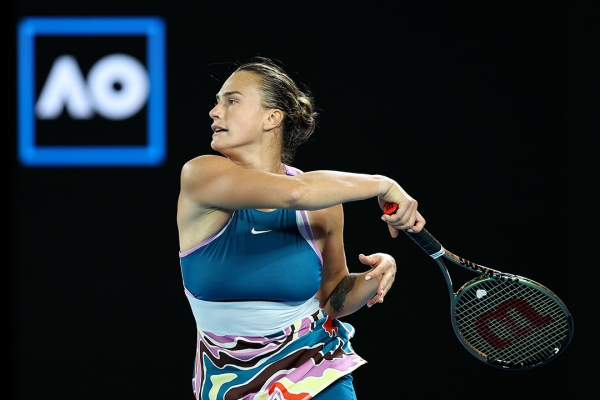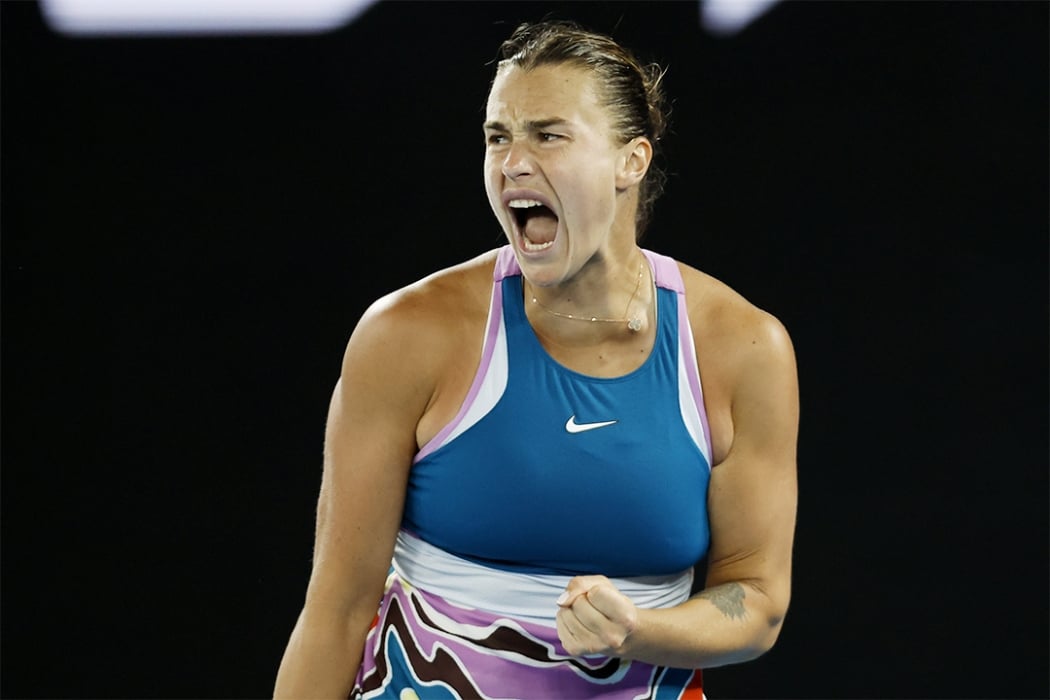When Elena Rybakina and Aryna Sabalenka meet in the women’s singles final at Australian Open 2023, power is the name of the game.
Both serving huge, they are among the women’s event’s fastest servers, attaining top speeds of 195km/h (Rybakina) and 193km/h (Sabalenka).
Rybakina has struck a women’s tournament-high 45 aces, while Sabalenka has crushed the highest rate of winners as a percentage of total points won of any player, man or woman, at AO 2023.
But what has also become clear after almost two weeks of play at Melbourne Park is the force of their forehands.
Both Sabalenka and Rybakina are among the top five women to compete at AO23 when measured by “average forehand heaviness”, a metric equally weighting stroke speed and spin.
It means fans are in for a treat when the duo trade blows at Rod Laver Arena on Saturday night.
While Rybakina has been notable for sending down 45 aces this fortnight, she has struck even more forehand winners, with 56 – double her tally of backhand winners.
She is averaging a forehand speed of 122.6km/h, almost 8km/h faster than the WTA top 100 average.

This, coupled with average forehand spin of 2,286 revolutions per minute (RPM) – 165 RPMs above the top-100 average – gives Rybakina a forehand heaviness rating of 7.3.
Sabalenka’s heaviness rating is even higher, at 7.5, thanks to an average forehand speed of 123.4km/h, and spin of 2,341 RPMs.
These measurements have helped Sabalenka power a total of 87 forehand winners past six opponents en route to her first Grand Slam singles final.
Only Zheng Qinwen (8.0) and Iga Swiatek (7.6) have a higher forehand heaviness rating at AO 2023 than Sabalenka and Rybakina.
The women’s top 100 average rating is 6.6.
“Sabalenka and Rybakina are both slightly above average when we compare the spin they generate on their forehands to the top 100”, said Olivia Cant, a data researcher at Tennis Australia.
“So they're not really losing anything in the spin category, and they're just so far ahead in the speed category, that they're getting that high heaviness rating.”
Cant explained that, after surveying top Australian coaches and players, it became clear a heavy forehand presents tactical challenges for opponents.

“If they're on the receiving end of a heavy shot, it could force them back in the court, or could challenge the impact height,” she explained.
“So it's almost like this interplay -- do they want to maintain their court depth, or their contact height?
“When the forehand is coming in, do you go back, catch the ball as it's falling, so you can maintain a lower impact height? Or do they take it at its peak, where it might have a higher bounce height, so then it’s above shoulder height, and they’re potentially not able to generate as much when returning it.
“And when forehands are coming in at such speed, the player’s contact point is also challenged horizontally. It’s harder to maintain a quality contact point in this instance, given the ball can arrive before they’ve had time to adequately prepare.
"Both Sabalenka and Rybakina also feature in the top five list for forehand winners across the tournament, so it's obviously a huge weapon for them.”

